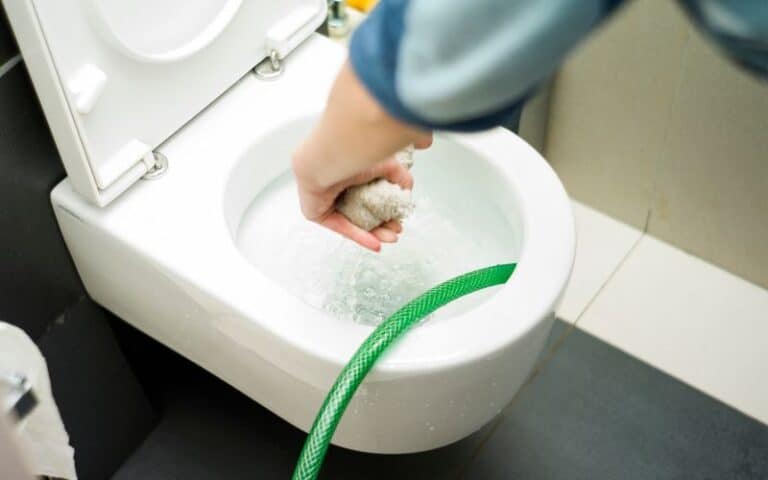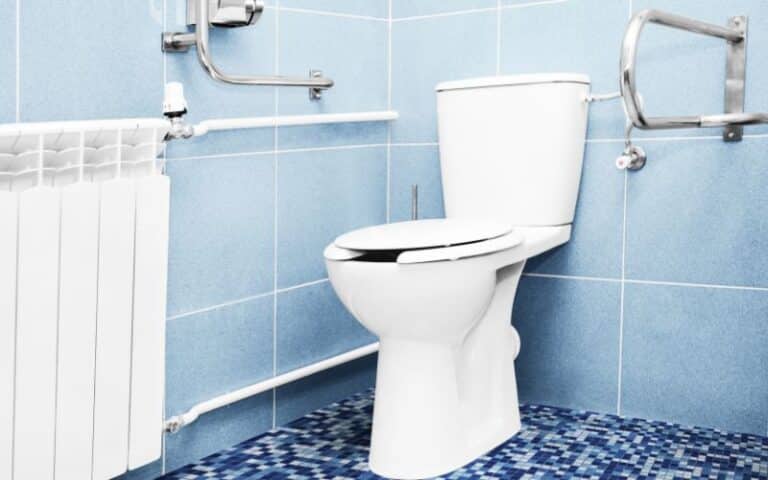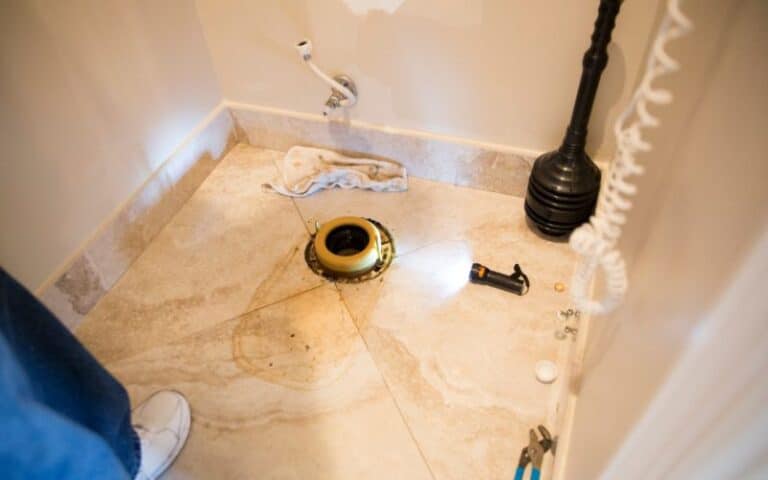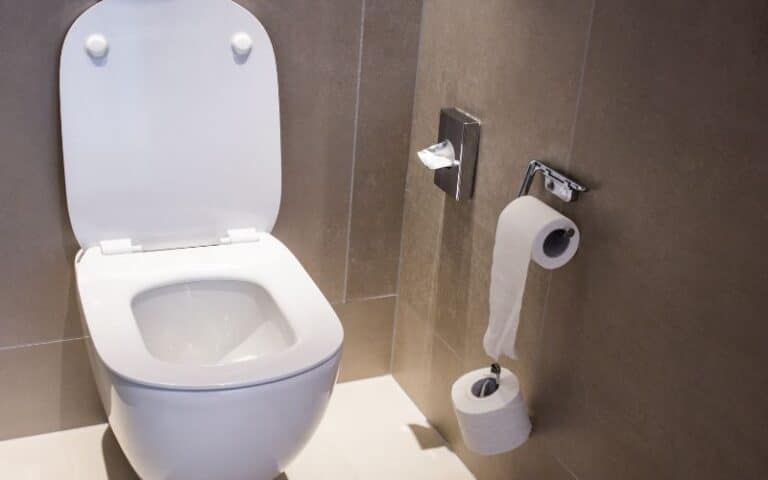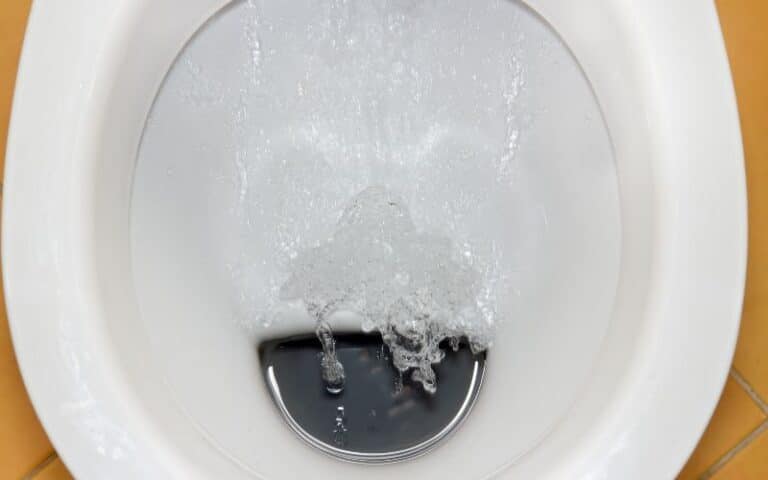It is common to find water running in your bathroom or toilet. Sometimes, these problems are minute, and you cannot detect the problem.
In other cases, the problems are there in plain sight and require you to fix them. You should attend immediately to a leak from your toilet tank.
You may wonder why your toilet tank leaks after changing the bolts. These questions appear frequently among household owners.
Your toilet tank can still leak after replacing the bolts. This problem is common. Your toilet tank leaks after replacing the bolts because you did not tighten the bolts properly. You might have tightened the bolts properly in other instances, but spaces still exist between the bolts and the washer.
Reading this article, you will find out why your toilet tank leaks after replacing old bolts.
Furthermore, I will tell you why toilet tank bolts still need sealants. Finally, you will discover why toilet tanks leak and how to fix them.
Why Does My Toilet Still Leak After Bolt Replacement?
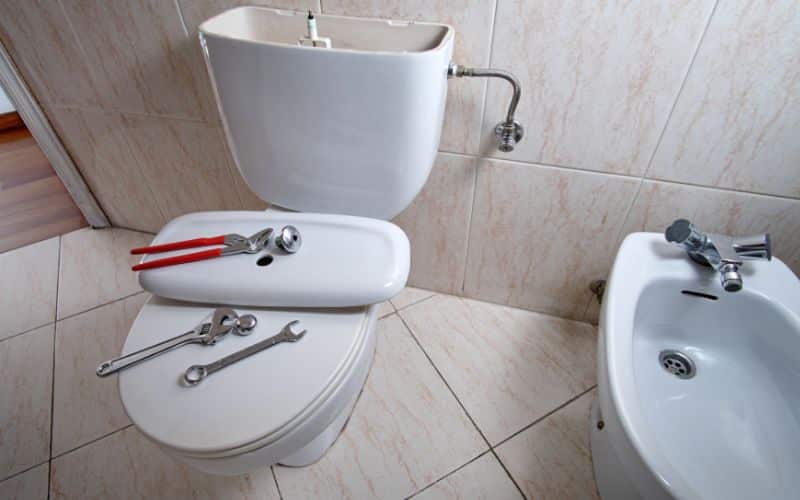
Your toilet tank could still leak after you have replaced the bolts. Replacing the bolts is often a quick fix, but that may not be the case in some instances.
Here are some common reasons why your toilet tank may still leak after you have replaced the bolts:
#1. Inappropriate Bolts and Nuts
Sometimes, you will experience continuous leakages through the toilet tanks even after you have replaced the bolts.
This condition could be a result of the bolt sizes. If you replace the bolts with inappropriate sizes, the toilet tank will still leak.
When you replace the bolts with those of smaller sizes, they will leave some pore spaces as you drive them through the toilet tank.
These pore spaces serve as exit points for the water to leak out. Ideally, you replace these bolts with those of similar sizes.
This rule applies to nuts, too. When you do not replace the same sizes of nuts, there will be pore spaces left.
These spaces will, in turn, serve as an exit point for water after you have replaced the bolts.
#2. Cracked Toilet Tanks
You may have done everything right, but the toilet tank is sometimes faulty. These faults allow water to leak out of the tank.
It will be best to inspect the tanks for cracks or pore spaces after fastening the new bolts and nuts.
In some instances, these cracks may be minute and hardly noticed by mere inspection. In other cases, the cracks might be large enough for you to see by observation.
Whatever the case, always inspect the base of the tank after you have changed the bolts and nuts.
You might find clues as to why your toilet tank leaks even though you have changed the bolts and nuts.
#3. Inadequate Or Absent Sealants
After replacing the bolts, many professionals use sealants as a precautionary measure to cover the holes.
These measures help to ensure that tiny holes between the tank and bolts seal up. When you apply sealants in adequate quantity, you can rest assured that you will not have leaks.
A common sealant you can apply in this case is the silicon caulk sealant. The silicon caulk sealant will coat the tank’s surface where the bolts and nuts are situated.
In any case, where there are pore spaces, the sealant will cover these spaces and prevent water leakage.
#4. Over-Tightened Nuts
When you tighten the nuts too hard, the toilet tank will leak after you replace the bolts. This fault arises due to cracks in the toilet tank.
When you over-tighten the nuts, the tension increases on the surface of the toilet tanks. This tension causes the tanks to crack after some time.
It will be best to have a perfectly screwed nut that is not too tight. In this way, you will not crack the toilet tank.
Ensure that you inspect the tank’s surface after you fasten the bolts to ensure there are no cracks that will lead to leaks.
#5. Loosely Tightened Nuts
Equally problematic is a loosely tightened nut. In this case, the nuts leave some pore spaces because they are not fastened properly.
When these faults happen, the nuts wobble, and the bolts spin on their hinges. Water leaks out of the pore spaces between the bolts and the surface of the toilet tank.
Do Toilet Tank Bolts Need Sealant?
Tank bolts do not need sealants. When properly applying the bolts and nuts, you can seal up a leak without a sealant.
However, a sealant can come into use when you have tried every other option, and there are still leaks.
These leaks could result from cracks in the toilet tank, rusty bolts and nuts, and inadequately sized bolts and nuts.
In all of these instances, the toilet tank still leaks after you have replaced the bolts. When you notice these faults, you can then apply a sealant.
A sealant usually serves as a quick fix that is temporal. A sealant can cover a crack or pore space without changing the whole toilet tank set.
A common sealant you can use is the silicon water adhesive. There are several sealants out there in the market.
The silicone water adhesive is a versatile, water-resistant polymer made primarily of silica. It is a plastic adhesive in a gel form that solidifies when it comes in contact with water.
You can apply this adhesive with a caulk gun to increase your precision. In other cases, you can spread the gel with your index finger at a spot.
If you have undersized bolts and nuts, you can apply the sealant to cover the opening left from this disparity.
The sealant can cover the holes without having you change the bolts and nuts to an adequate size.
In another instance, you may face a rusty bolt and nut. When your bolt and nuts are rusty, they allow water to pass through tiny spaces in the rust.
You can apply a silicon adhesive to cover up those pore spaces of rust. Rust can weaken a metal and allow water to leak through openings.
You can also apply the silicon adhesive to seal up a crack. Minor cracks can be covered with silicon adhesive without changing the entire toilet tank.
You do not need a toilet tank sealant when installing bolts or nuts. Some special instances require you to apply a sealant.
In these instances, you can seal up pore spaces with the sealant without changing the bolt or the toilet tank.
3 Reasons for Toilet Tank Leakage from Bolts and Quick Fixes
A toilet tank frequently leaks from the bolts. The bolts are one of the openings at the bottom of the tank that water can pass through.
Here are three common reasons why water sips through the bolts at the bottom of the toilet tank in your bathroom:
#1. Rusty Bolts and Nuts
When your bolts are rusty, they allow water to sip through the damage. When metals become rusty, a lot changes about the metal.
Rusts generally spoil every material made of metal. Any material made of metal is susceptible to rust when exposed to moisture.
When rust forms, the iron atoms in the material react with oxygen molecules in the water to form iron oxide.
Rusting causes iron to become flaky and weak. The bolts in the toilet flange are not left out. They become very weak and lose their strength.
One consequence of this fault is water leaking from these rusted bolts and nuts. Replacing the rusted bolts and nuts is one way to resolve this problem.
#2. Misaligned Bolts and Nuts
You could find bolts and nuts that are misaligned with holes in the toilet tank. In this case, the bolts might allow water to leak from these holes.
This condition could be a result of the bolt sizes. If you replace the bolts with inappropriate sizes, the toilet tank will still leak.
When you replace the bolts with those of smaller sizes, they will leave some pore spaces as you drive them through the toilet tank.
These pore spaces serve as exit points for the water to leak out. Ideally, you replace these bolts with those of similar sizes.
This rule also applies to nuts. When you do not replace the same sizes of nuts, there will be pore spaces left.
These spaces will, in turn, serve as an exit point for water after you have replaced the bolts. An easy way to fix this problem is by replacing the bolts with the appropriate ones.
If this procedure is too stressful, apply a sealant to cover up these holes and stop the water leaks.
#3. Damaged Bolts and Nuts
In rare instances, the bolts and nuts may be completely damaged. These damages could include cracks or total breakage.
When these damages occur, the toilet leaks from the tank. The remedy to the damaged bolt is an outright replacement. You can choose to use a sealant to cover these damages.
The table below summarizes the reasons why water leaks from toilet tanks through bolt pores and their remedies:
| Reasons why water leaks from bolts | Commonest remedies |
|---|---|
| Rusty bolts and nuts | Replace the bolts |
| Misaligned bolts and nuts | Realign the bolts Apply a sealant |
| Damaged bolts and nuts | Replace the bolts Apply a sealant. |
Why Does My Toilet Keep Leaking After Replacing Everything?
After replacing every part of the toilet tank, you might still be faced with a leak from the toilet tank. This fault is common.
Once you find a leak after such replacement, the most probable reason might be the cracked toilet tank.
Your toilet tank can crack for a couple of reasons. The most common cause of cracks is due to the age of the tank.
As the toilet tank ages, the chances of getting cracked become higher. Another cause of a cracked toilet tank is an over-tightened bolt.

